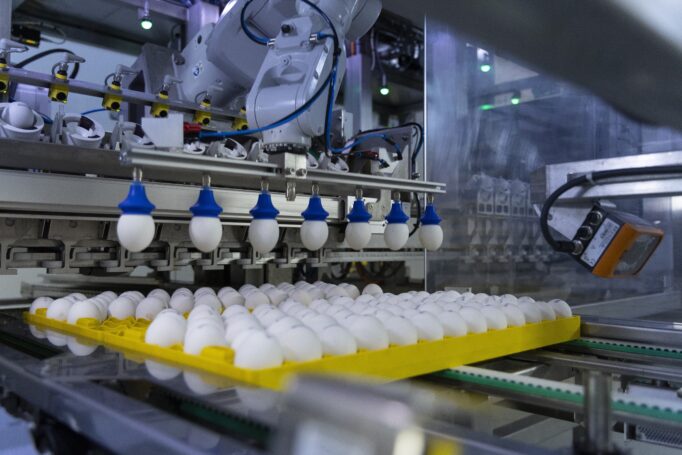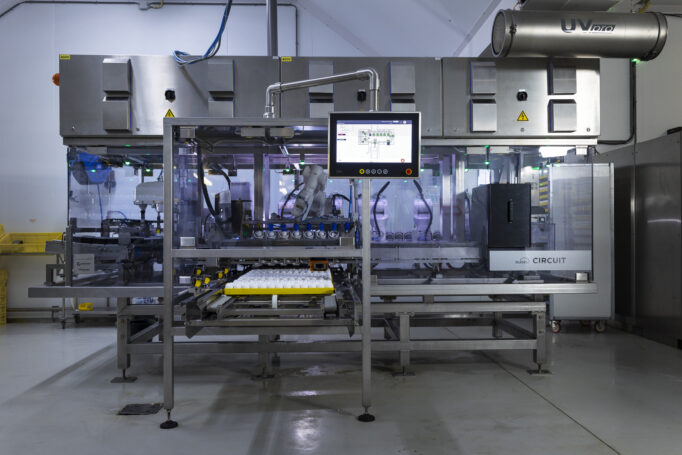Smart technology to improve animal welfare
Leestijd: 4 min
18 mei 2023
Blog
We are facing a lot of challenges in the world when it comes to animal production and animal welfare. Regarding animal welfare we had an interesting conversation with Carmen Uphoff, Chief Operating Officer at Respeggt Group, concerning an innovation Respeggt brought to the market. ‘When it comes to egg production, the challenge is male chick culling, male chicks simply cannot lay eggs but represent 50% of the day-old layer chicks. Finding a solution for this problem is our core focus.’
CARMEN UPHOFF, CHIEF OPERATING OFFICER AT RESPEGGT GROUP
‘Chick culling is done by hatcheries because there was no way around it. The male chick is not useful let us say. It is neither a layer nor a broiler chicken*. It is a negative byproduct that has been troubling the industry for a long time. Nobody likes to do chick culling and it gives a bad image to our sector. Our solution is welcomed by hatcheries as they know that in the end, customers with an eye for animal welfare, want to pay for eggs produced with the certification ‘Free of Chick Culling’.’
*Layer is an egg-producing chicken, a broiler is a chicken fattened for meat.
The solution
‘We offer a solution for gender identification in the hatching egg using the Respeggt process as a unique patented process. We created a machine that can bring this process into practice. Besides this, we monitor the supply chain to guarantee that our clients operate without the need to cull chicks. This certification can be used by the retailer and mentioned on the packaging of the table eggs.’
The innovation also improves efficiency in certain parts of the hatchery as you only produce female chicks, therefore you need a lower overall hatching capacity and fewer labor because you do not need to manually sex the chickens (separate the males from the females) after they have hatched.
Where did it all start?
‘We started digging into this subject and we realized that research has been done by the University of Leipzig. The University was searching for a partner. The retailer I worked for decided to start Respeggt Group and together we continued to work on a solution to the problem.’
The first challenge was to design a machine. Working with research from the University and turning this into a scalable method that could work in any hatchery in the world. The first prototype was operational in 2019. Respeggt ran first trials and introduced the first eggs with the ‘Free of Chick Culling’ label in the supermarkets in Germany and soon after that in the Netherlands and Switzerland. It has been growing ever since. ‘We had many modifications during these years and still we are very innovative, improving constantly by implementing the latest technologies.’

Gender identification in the hatching egg
The gender is identified by analyzing the embryo inside the hatching egg; is it female or male? From the hatching egg to hatched chick takes in total 21 days. The aim is to do gender identification as early as possible. With our solution this can currently be achieved between day 8 and day 11. The hatching eggs need to go from the incubator into the machine, where the hatching eggs are analyzed; a laser makes a tiny hole in the shell and a small drop of fluid is extracted from the hatching egg. Finally, there is a sealing device where the holes are sealed with wax. The fluid is analyzed to determine the gender. ‘With the results, we sort the hatching eggs, and we end up with one tray being a 100% female hatching eggs. The eggs go back into the incubator and after those 21 days you will only hatch females. Currently we operate with 98% accuracy, this is something we are proud of.’
Job openings for mechanic engineers
Respeggt is looking for colleagues who are passionate about the mechanical side of what they do. ‘We work with a very fragile product in the form of an egg with a living embryo inside. This egg will go through the machine, will go back into incubation and then an animal will hatch out of it. It looks very technical but then you have this fragile living product inside. It is amazing to see that it is working so well. This is due to the motivated team behind all this. As engineers you can have an enormous impact in the process, how can we improve future machines? What can we do better? What software update do we need? You are the one person looking after the machine every day and you will be key contributor in the dialogue about improvements.’
‘We have completely new machinery that did not exist five years ago. The focus around gender identification has not been there before. In a short time, this became an integral part of the egg industry, and we can still take steps to improve further.

The future
We are happy that we are expanding, new countries, new people, and new cultures. That is nice! Especially in Germany, there is a high demand, therefore, we are increasing our capacity for the German market. But the interest is also starting to shift to other countries, and we might go overseas next year, let us see! We are still a small company with around 30 employees. The idea is that everyone working for us can still grow within the company, change his or her position and grow in a different direction. It is great to see the interest of the industry and the way we can expand. We are growing, having new colleagues, opening new markets. It is exciting for everyone!
Do you want to know more about the job openings at Respeggt? You are welcome to contact us.
Open inschrijving
Ben jij op zoek naar een nieuwe uitdaging? Schrijf je dan bij ons in.

